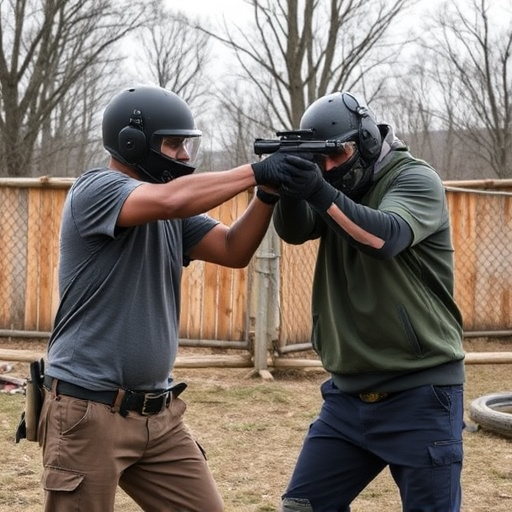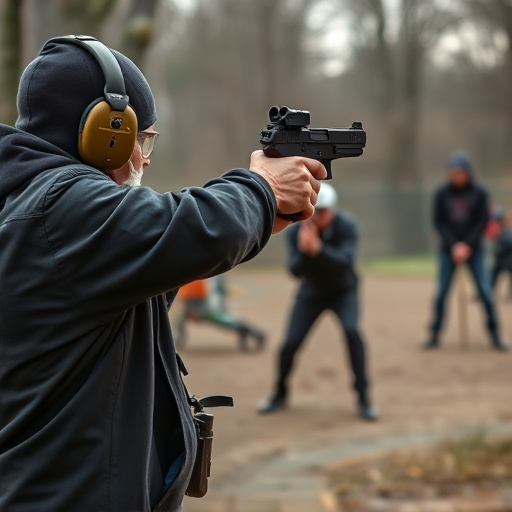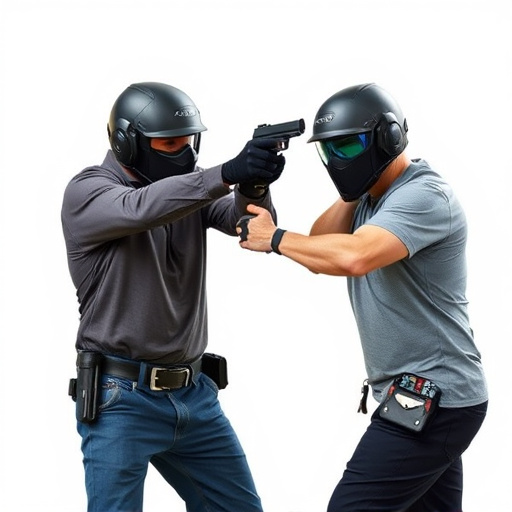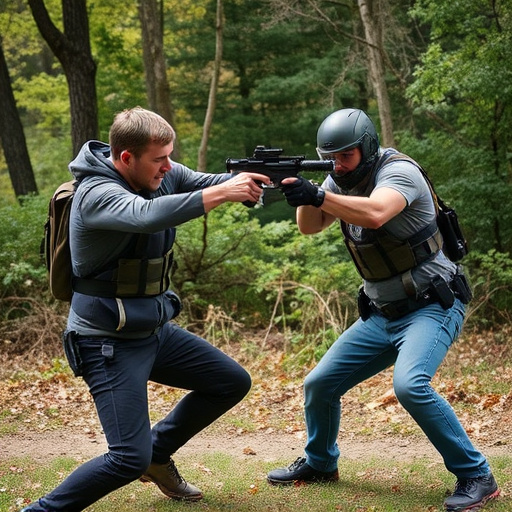The quest for the most concealable stun gun design balances compactness with powerful current distribution for maximum stun impact. Advanced materials, strategic electrode placement, and EMF analysis ensure optimal performance while minimizing detection risk. This focus on stealthy design enhances personal safety, catering to users seeking discrete yet effective self-defense tools.
Electrical current spread patterns play a crucial role in understanding the effectiveness and safety of stun guns. This article delves into the intricate dynamics behind these patterns, focusing on their impact on stun gun design. We explore key factors influencing the concealability of stun guns, highlighting advanced electromagnetic field analysis techniques for optimal performance. Through modeling, we uncover strategies to enhance safety and effectiveness, ultimately guiding the development of the most concealable stun gun designs.
- Understanding Current Spread Patterns in Stun Guns
- Factors Influencing Concealability of Stun Gun Design
- Advanced Electromagnetic Field Analysis Techniques
- Optimizing Stun Gun Safety and Effectiveness through Modeling
Understanding Current Spread Patterns in Stun Guns

Stun guns, also known as electronic control devices (ECDs), utilize electrical current to incapacitate targets by disrupting their neuromuscular system. The spread pattern of this current is a critical factor in determining the weapon’s effectiveness and range. Understanding how electricity moves through different mediums, such as human tissue, is essential for optimizing stun gun design.
One of the key considerations in stun gun technology is achieving a most concealable design while maintaining optimal current spread. Concealment is crucial for personal safety and operational secrecy. Engineers must balance the need for compactness and low-profile features with ensuring that the electrical current can efficiently reach and affect a wide area of the target’s body, thereby maximizing its stun impact. This involves strategic placement of electrodes, careful selection of materials, and precise control of current intensity and duration.
Factors Influencing Concealability of Stun Gun Design

The concealability of a stun gun design is influenced by several key factors, making it a complex interplay of both physical attributes and strategic considerations. One of the primary determinants is the device’s overall size and shape—smaller, more compact weapons tend to be easier to hide, especially in everyday objects or clothing. Ergonomic designs that mimic natural hand shapes or fit seamlessly into pockets and bags offer additional concealment benefits.
Material selection plays a crucial role as well; lightweight yet durable materials like high-quality metals and advanced composites allow for thinner profiles while maintaining structural integrity. Additionally, innovative stun gun concepts that incorporate flexible or adjustable components can further enhance their ability to be disguised, making them less conspicuous during everyday carry scenarios.
Advanced Electromagnetic Field Analysis Techniques

In the realm of electrical current spread pattern analysis, advanced Electromagnetic Field (EMF) analysis techniques play a pivotal role in understanding and optimizing device performance, especially when it comes to concealed weapons like stun guns. These cutting-edge methods go beyond traditional measurements, delving into the intricate details of EMF distribution and behavior within and around devices. By employing sophisticated tools such as 3D simulation software and high-speed oscillators, researchers can model and study the most concealable stun gun design configurations.
This in-depth analysis enables them to identify areas where current density is highest, providing insights into potential overheating issues, energy distribution efficiency, and even hidden components’ impact on overall performance. Moreover, these techniques aid in balancing power delivery, ensuring consistent and effective operation while minimizing the risk of detection, a critical factor for stun guns designed for covert operations.
Optimizing Stun Gun Safety and Effectiveness through Modeling

In the pursuit of enhancing personal safety, optimizing the design of stun guns is a critical aspect often overlooked. Modeling plays a pivotal role in this process by offering a detailed understanding of electrical current spread patterns. By studying how current flows and interacts with various materials, designers can create stun guns with superior performance and increased safety measures.
One key consideration is the development of a most concealable stun gun design. Through advanced modeling techniques, engineers can minimize the device’s footprint while maximizing its impact. This involves meticulously analyzing the current distribution to ensure optimal shock delivery without compromising user safety or detectability. Such innovations contribute to the creation of self-defense tools that are both effective and discreet, catering to individuals seeking peace of mind in diverse situations.
By employing advanced electromagnetic field analysis techniques, researchers can optimize stun gun safety and effectiveness. Understanding current spread patterns and factoring in design elements that enhance concealability are key to developing the most effective and discreet self-defense tools. Through modeling and simulation, it’s possible to create a truly revolutionary stun gun—one that strikes a powerful blow against crime while maintaining user privacy.
